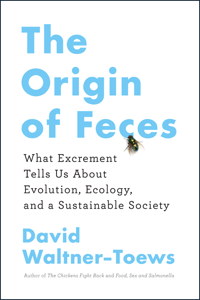Books
The Tailbone Patrol
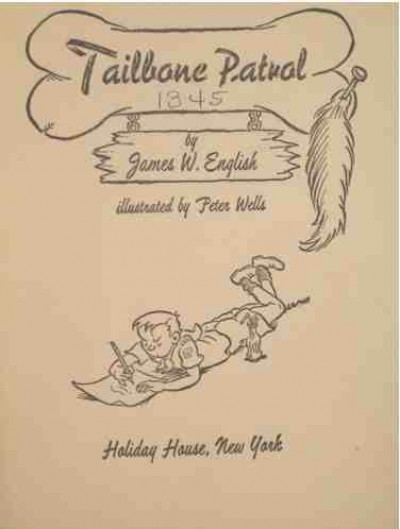
Unfortunately, the mutability of the English language has not been kind to James W. English's stories of Scouting known as The Tailbone Patrol. In 2013, the title sounds like one of those how-to-pick-up-women books, or a "Girls Gone Wild" episode.
If you want a copy to peruse, they start at $200.00.
Or you can read one of the stories about the "Tailboners" here.
Posted By: Paul - Fri Aug 09, 2013 -
Comments (5)
Category: Clubs, Fraternities and Other Self-selecting Organizations, Innuendo, Double Entendres, Symbolism, Nudge-Nudge-Wink-Wink and Subliminal Messages, Books, 1950s, 1960s
The Views of An Angry Man
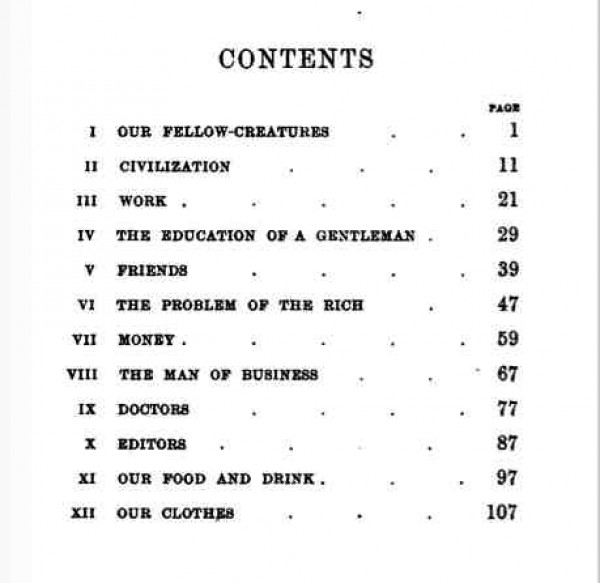
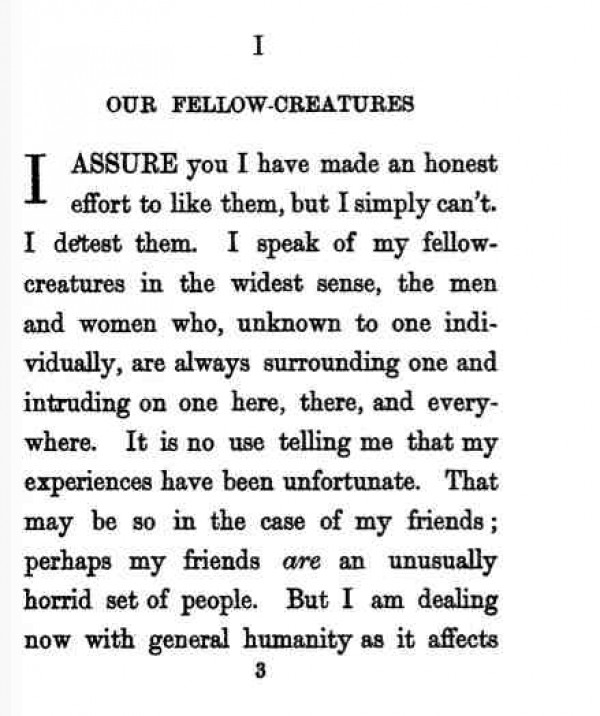
A bracing humorous antidote to all the do-gooder cant so rampant nowadays.
Read the whole small book here.
The author at Wikipedia.
Posted By: Paul - Wed Jul 03, 2013 -
Comments (2)
Category: Books, Curmudgeons and Contrarianism, 1900s
Baseball Joke Book
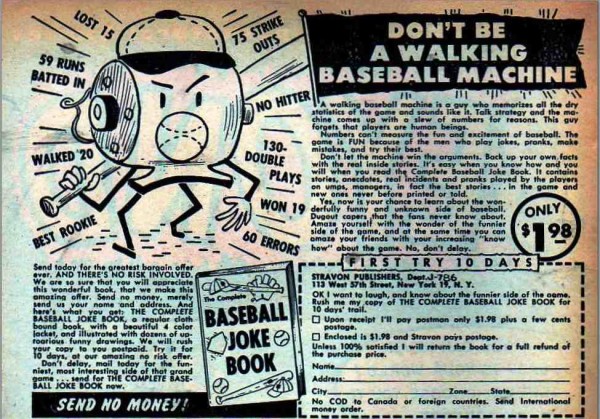
[Click to embiggen]
Are there really enough good baseball jokes to fill even a small book? Maybe if you eliminate the requirement of "good." I see some contemporary compilations for sale at Amazon, etc. And then we have this site.
"A young lady arrived at her first ballgame during the 5th inning. "The score is 0 to 0," she heard a nearby fan say. "Oh, good," she cooed to her boyfriend, "then we haven't missed a thing."
The source for the illo.
Posted By: Paul - Tue Jun 25, 2013 -
Comments (2)
Category: Humor, Sports, Books, 1950s
Zippy & Me
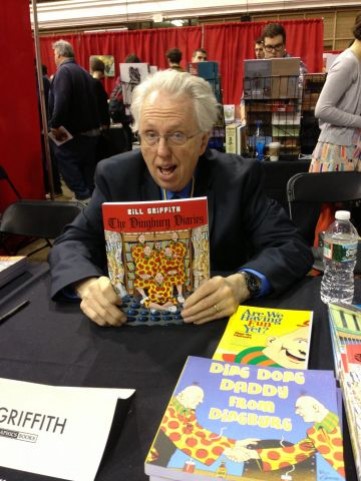
Yesterday, Saturday April 6, I was privileged to interview Bill Griffith, longtime weirdo and creator of Zippy the Pinhead (along with so many other great comics) at the MOCCA Fest in NYC. Here's Bill at the Fantagraphics table at MOCCA, showing off the newest Zippy collection, now available thru the link at the sidebar here.
And here we are onstage. (Photo by Phil Merkel.)
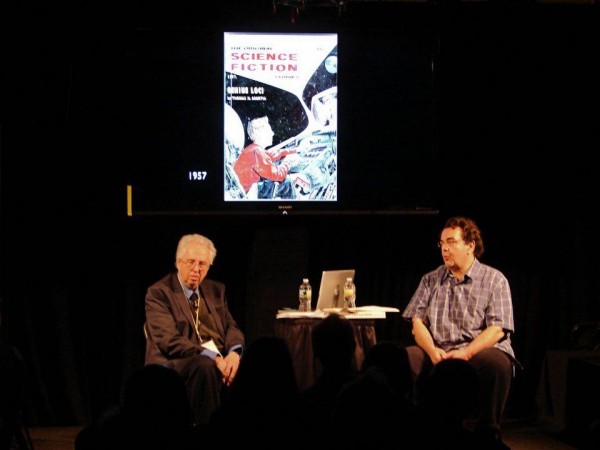
Posted By: Paul - Sun Apr 07, 2013 -
Comments (8)
Category: Conventions, Cult Figures and Artifacts, Comics, Surrealism, Books
How to Use Jiu-Jitsu
Or, from the looks of it, how to use the book itself as a weapon. Prices on Amazon for this 1944 publication range from $24 to $80. So it may be useful info, but it ain't cheap.
Posted By: Alex - Thu Mar 28, 2013 -
Comments (4)
Category: Books, Weapons
Life After Doomsday
Bruce Clayton's survivalist masterpiece, Life After Doomsday, certainly belongs in any collection of weird non-fiction. It comes from a time, not so long ago, when the general consensus was that we were all going to be blown to smithereens in a nuclear war, and Clayton offered detailed instructions on how to stay alive should you survive the actual bombs. Below is the 1981 Newsweek review of the book, as well as Clayton's diagram of how to turn your home into a fortified bunker. And hey, why not read it together with Paul's After the Collapse
His point is, you must do something: "The question of which assault rifle you should buy isn't nearly as important as the fact that you must get one" — to mow down ghetto refugees or your neighbors in search of your food supply. In fact, refugees won't be much of a threat because the roads will be blown up along with the cities, but as for your friend next door — well, the Heckler and Koch HK91 heavy-assault rifle firing a 7.62 NATO cartridge works very well. If you're on your roof hosing down the fallout, a Colt Commander .45 autopistol modified for combat is easier to carry. He shows us, too, how to convert our houses into efficient fire zones, and suggests we store away five years' supply of wheat, milk, sugar and salt. A wheat stew in every pot and an Armalite AR-180 in every loophole will see us through, as long as we've ordered our gas masks (Clayton tells us where).
Posted By: Alex - Tue Mar 12, 2013 -
Comments (2)
Category: Armageddon and Apocalypses, Books, 1980s
New Weird Books Sidebar
Eagle-eyed WU-vies will have spotted the new sidebar, installed by Alex this weekend, where we will recommend books of sufficient weirdness, we hope, to deserve your attention.
The reason for picking most of the titles should be obvious, at least upon visiting their page. But if we want to expand on our reason for selecting a book, we'll do a separate post on the main blog.
We hope this new feature brings you lots of pleasant--and weird--reading!
PS: if you want to bring something worthy of dissemination to our notice, please do so!
Posted By: Paul - Mon Mar 11, 2013 -
Comments (4)
Category: Weird Studies and Guides, Weird Universe, Books
Poetry of the Insane
While he was attending physician at the Illinois State Hospital for the Insane, Dr. Charles Mayos collected poems that were written by his patients. Of course, all poets are a bit insane, but the ones that interested him were actually locked up and labeled psychotic. Eventually, in 1933, he published a collection of this verse in a book he titled Poetry of the Insane. [St. Petersburg Times]
The publisher mustn't have thought there was a large market for such a book, because only 300 copies of it were printed , which now makes it quite rare — and valuable. Copies fetch up to $200.
I've never got my hands on a copy of the book. (Not willing to pay that much for it.) Below is the only poem from it I can find online. I've read much worse poetry from people who are supposedly sane.
Awakening by Anonymous |
| The hue of sorrow everywhere The jagged rocks seem marble tombs, Yet through the barren waste way over there, A lily blooms. As up the rugged heights revealed, I creep, and deem the world as wrong; A singer trills above the love unsealed, His mating song. I pierce the gloom with purer eyes, For here I know that Heaven is — I yield my empty self and realize These are all His. |
Posted By: Alex - Fri Feb 15, 2013 -
Comments (7)
Category: Books, 1930s, Mental Health and Insanity
The Origin of Feces
This looks like an interesting book. [Amazon LinkThe author offers this summary of his book: "as soon as you have life, you have essentially poop. As life developed, the waste for one animal became food for another animal. We depend on a web of recycling of nutrients, and poop is an important part of that. People get sqeaumish but they shouldn’t be. If you don’t think of it as poop, but instead think of it as recycling nutrients, this is a really interesting and sustainable way to produce food."
Posted By: Alex - Sun Feb 10, 2013 -
Comments (5)
Category: Science, Books, Excrement
E.F. Hutton Coloring Book
Back in 1987, the financial firm E.F. Hutton had just suffered some bad years that included scandals and major losses. So the senior executives came up with what they thought was a great idea. They'd boost the morale of all their 18,500 employees by sending everyone a coloring book (with crayons) that laid out the problems faced by the company in grade-school language. The book included "cute drawings of houses, racing cars and children" while warning employees that they all had to work harder because "we're no longer the nicest house on the block." The gesture was received by the Hutton employees about as well as you might think it would be. [google news archive]Those coloring books are now collector's item. The going price on eBay is $125.

Posted By: Alex - Tue Jan 15, 2013 -
Comments (7)
Category: Books, 1980s

| Who We Are |
|---|
| Alex Boese Alex is the creator and curator of the Museum of Hoaxes. He's also the author of various weird, non-fiction, science-themed books such as Elephants on Acid and Psychedelic Apes. Paul Di Filippo Paul has been paid to put weird ideas into fictional form for over thirty years, in his career as a noted science fiction writer. He has recently begun blogging on many curious topics with three fellow writers at The Inferior 4+1. Contact Us |



